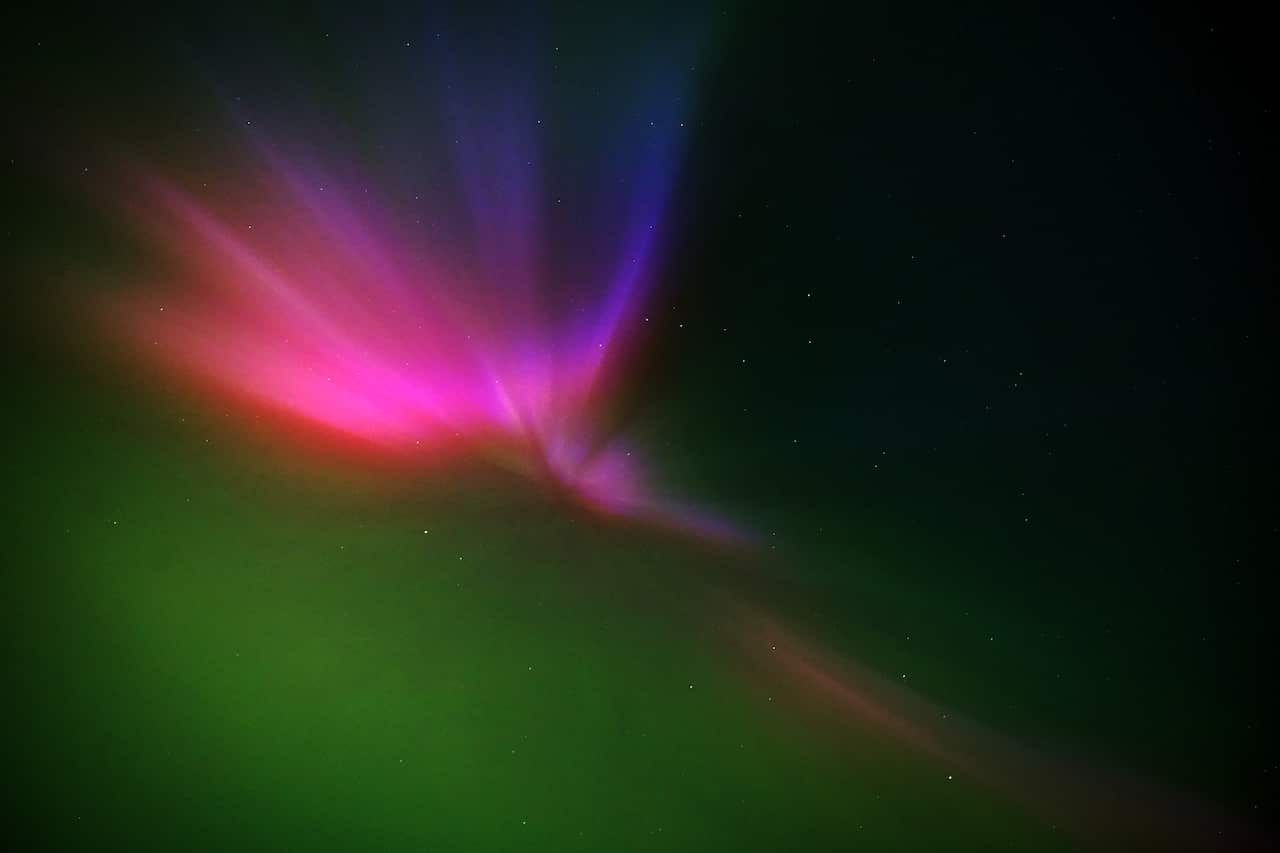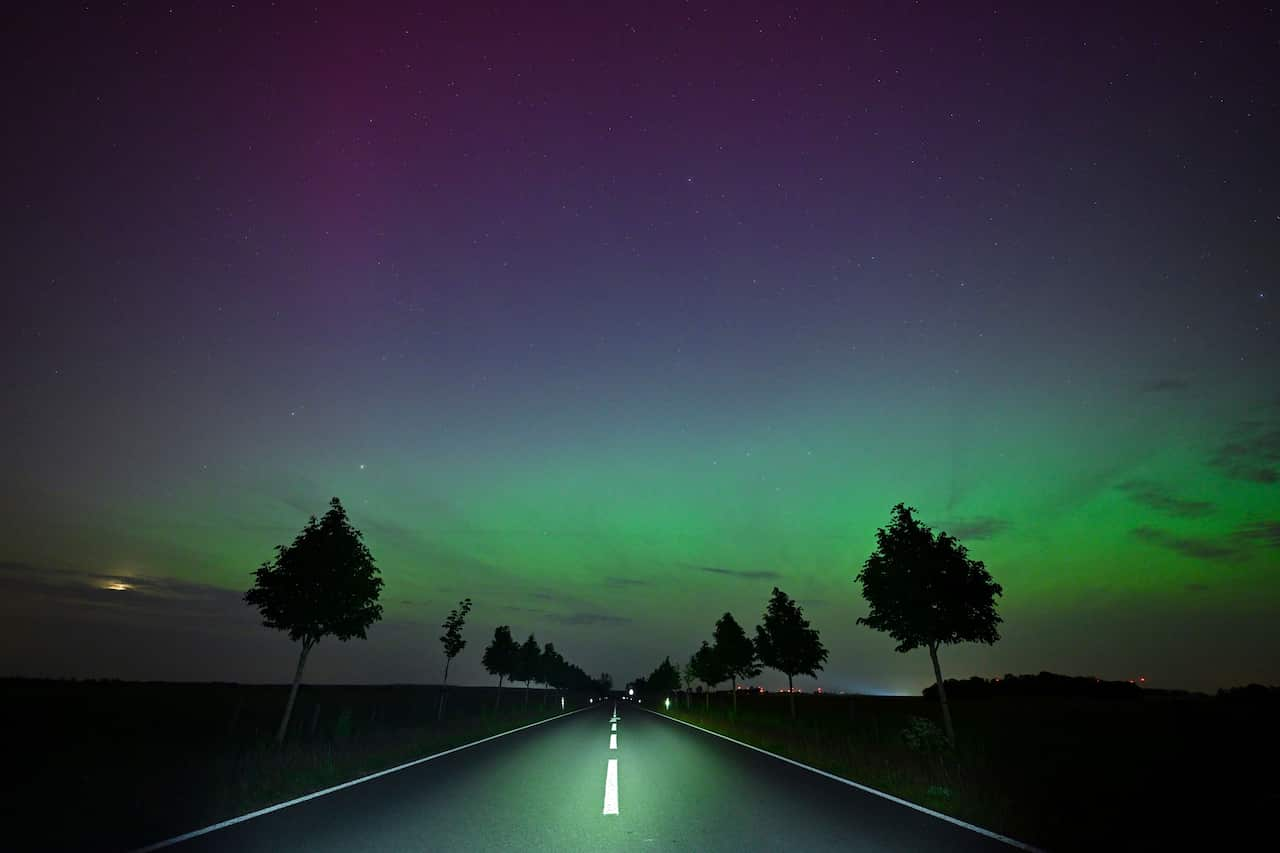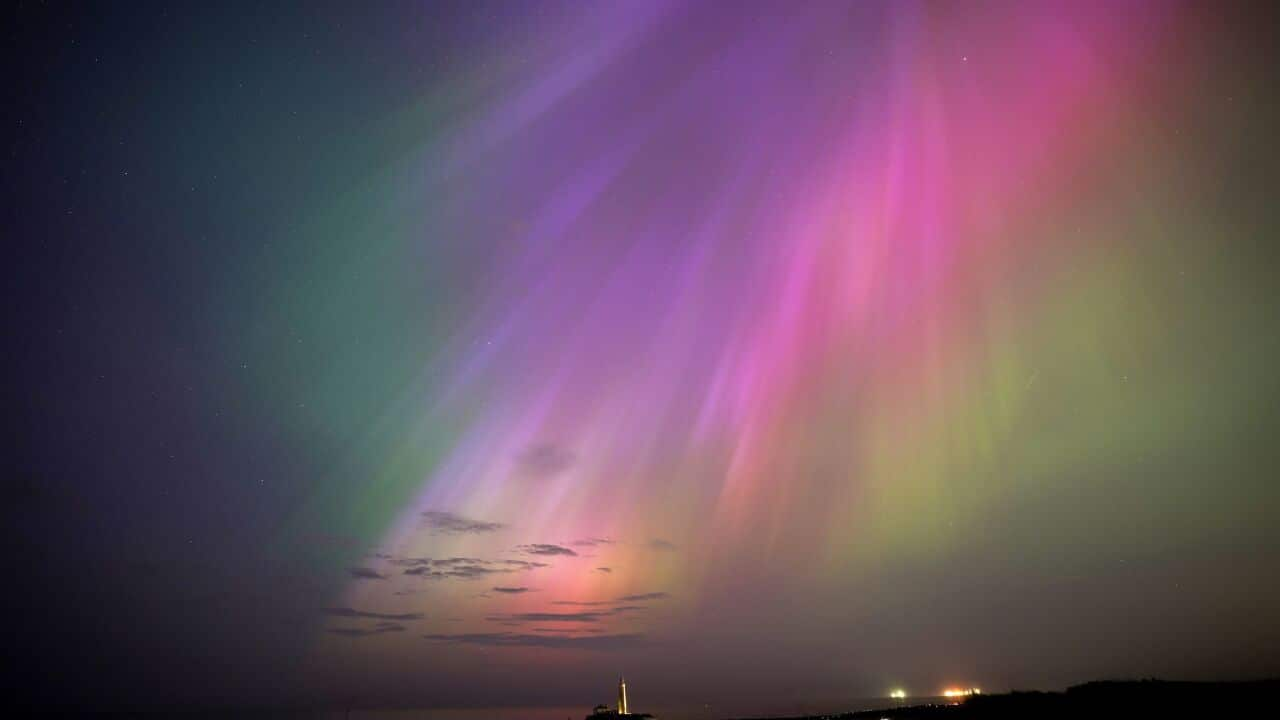The first of several coronal mass ejections (CMEs) — expulsions of plasma and magnetic fields from the sun — came just after 1600 GMT on Friday (2am Saturday AEST), according to the United States’ National Oceanic and Atmospheric Administration (NOAA)’s Space Weather Prediction Center.

The northern lights glow in the night sky above the village of Daillens, Switzerland. Source: AAP / Laurent Gillieron/EPA

The aurora borealis glow in Merseyside, England. Source: AAP / Peter Byrne/PA
It was later upgraded to an “extreme” geomagnetic storm — the first since the so-called “Halloween Storms” of October 2003 caused blackouts in Sweden and damaged power infrastructure in South Africa.
Social media lit up with people posting pictures of auroras borealis and australis from Australia and northern Europe.
Officials said people should have the normal backup plans in place for power outages, such as having flashlights, batteries and radios at hand.
Where can I see aurora australis?
“The Bureau predicts that these geomagnetic conditions are likely to continue throughout 11 May,” it said.

People visit St Mary’s lighthouse in Whitley Bay, England to see the aurora borealis. Source: Getty / Ian Forsyth
The bureau said when G5 geomagnetic conditions occur, bright auroras “will be visible at unusually low latitudes, including dark-sky locations near Sydney and Perth”.
“Geomagnetic storms of G5 level can potentially disrupt: critical infrastructure such as power grids, causing power outages, [and] satellite services, affecting communications and global position, navigation and timing services that use high-frequency radio communication.”

The Northern Lights appear in the night sky over East Brandenburg. Source: AAP / Patrick Pleul/AP
The most powerful geomagnetic storm in recorded history, known as the Carrington Event, occurred in September 1859, named after British astronomer Richard Carrington.
They emanated from a massive sunspot cluster that is 17 times wider than our planet. The sun is approaching the peak of an 11-year cycle that brings heightened activity.

Witnessing such mesmerizing auroras must have been truly breathtaking. Let’s hope authorities are prepared to mitigate any potential disruptions caused by these intense geomagnetic storms. Stay safe, everyone!